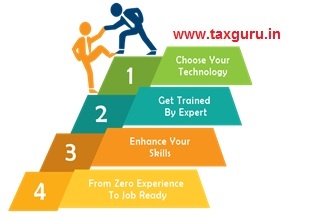Why we need skill development and its syllabus change? When the service industry is growing why India does need skill development? GDP growth will come from an injection of liquidity then why we spend billions on skill enhancement? What contribution the Indian GDP will get from the skill development when India is on the path of the 4th Industrial revolution? These questions came from my previous article on Skill Development. In continuation to my previous post of Skill development, it’s being found that per capita income and economic efficiency is shifting towards the opposite direction. The service industry is expanding and absorbing the unskilled manpower but in the long term the per-capita income is coming down from the set of data.
One of the key impact on the due to lack of skill development is that the social expenditure increases which create further ripple impact on the economy.
The whole country or the whole global economy is riding on the formula of
Economy = Credit = Lowering Taxes = Consumption = Disaster Economy.
Yes, Disaster economy. Lower taxes reduce investments in a democratic country. The problem is that Total Factor Economy is being ignored and the basics of the human labour are being ignored. If a qualified person is not getting a job that does not mean jobs are not available in the market. Neither the blame can be passed to technology advancement.
Now the 2nd formula of identification of problem
Doubling Productivity = (Lack of Skill) = fallen per capita income = fall in consumption = injection of liquidity (Interest rate cut down/Taxation rates cut down) = No growth of per capita income of Human labour(since lack of Skill-No Credit) = Slow economic growth.
The above two formulas speak very clearly that skill development is a necessary part of reviving the Indian economy in the long term. Interest rate cut down and taxation will not create eligibility for doing skilled jobs when the base of the skill required to do the job is increased due to technological advancement.
You can invest in technological advancement kicking in the taxation and interest rate benefits and double the productivity. But this productivity growth does not guarantee that consumption will pick up since the labour force does not get a job due to lack of skill (who are indirectly the buyers of the product). The problem is that labour, capital and technology is not getting an appropriate combination to get the economy going ahead.
India is looking for a USD 5 Trillion GDP which cannot be achieved only on the service industry and consumption. Manufacturing, reducing inequality will lead to the growth of the Indian economy. Indian consumption-based GDP growth cannot achieve based on capital or liquidity injection within the society. One needs to understand when the labour force skilled education is enhanced employment gets into the picture which actually drives the consumption. What we are trying to do is that by lowering taxes and interest rates we want people to borrow and spend. This consumption theory will not work. The demographics of the economy is changing simultaneously with the velocity change of technology.

India is currently looking ahead to consumption growth through reduction of taxes and increasing liquidity into the system. But these triggers will fail to push the growth of the Indian economy as the key area of human labour is not able to get the consumption. Now capital and labour are the two segments which help the economy to grow.
Labour is struggling due to lack of skill and the capital is being deployed at the wrong place. Total factor productivity includes infrastructure, education, and advancement in technology.
Skill development is mandatory since the growth of the economy will be restricted and unskilled jobs per capita income will be declining over the long term with more labour force breaking the monopoly of the same.
Technology and capital will open up new gates but that will not push the per capita income of the society. For example, Zomato has 200,000 people bringing food to middle-class consumers in 500 cities across the country. In 18 months, it hopes to double that number, its co-founder Gaurav Gupta says. Its average delivery person receives Rs. 22,000 ($306) a month gross or between Rs. 15,000 to Rs. 18,000 net take home. Now is one of the societies will find happiness whereas lack of skill has lead people to get into these unskilled jobs.

OLA drivers used to earn significantly in the early times of the industry. But as the maturity of the industry developed the per capita income also came down and hence many skilled employees are earning less.
The government in one point will be happy that certain part of the society is getting employed but this employment will bring short term consumption power and in the long term the same will come down will falling per capita income. Technology has created an extended version of the service industry. B2B and B2C enhancement will happen but that will not absorb the employment over the long term. These strategies of growth are short term. Now when educated people don’t find a job due to lack of skill then they get absorbed in these type of service industry which creates a ripple effect on the society on a bigger scale over the generation.
Now lack of skill will lead to the growth of temporary jobs or flexible jobs which is not going to be long term GDP growth, driver. Further, the per capita income from this job will only drop as the supply of labour with less skilled increases.
Indian economies want to grow at 8% but the same cannot be achieved unless the skill of the labour is enhanced to walk on the footprints of 4th industrial revolution or advanced technology. Technology itself will create more jobs when the skill of the labour is increased and the skilled manpower segment grows.
The per capita income and the Total factor Productivity are two key segments which need to be understood before India solve the GDP growth problem. Technologies can double productivity but not consumption unless human labour is developed. Economic efficiency cannot come from the doubling of productivity without human labour productivity increased. This is the grey place where skill development will help to increase the skill level, match with technological enhancement and finally create economic efficiency. Consumption-based GDP will not come if the skill level is poor and technology alone advances.
Labour Productivity and Total Factor productivity (which includes all components of productivity) has a different story. Manufacturing is the segment and also the service industry where skilled development and change in the syllabus will improve the labour output.





